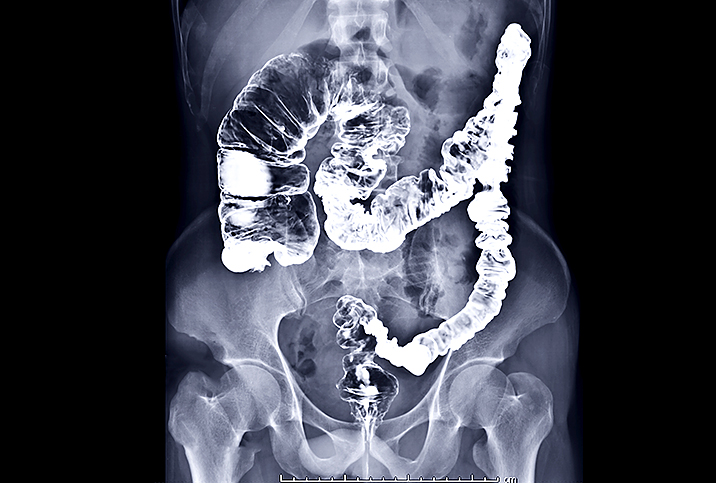Contrast Dye Shortage Continues Due to Supply Chain Issues

A critical component of the medical imaging process is in short supply after its production was temporarily suspended in spring 2022 by Shanghai's COVID-19 lockdown.
Iodinated contrast media products, more commonly known as contrast dye, are used with various tests, such as CT scans and angiography, to help evaluate numerous conditions, including cancer, stroke and heart attack.
The main clinical utilization of iodinated contrast is to increase perceptual contrast between healthy and diseased tissues, rendering lesions detectable to the human eye. Without iodinated contrast, CT becomes significantly limited because of low inherent contrast between different types of soft tissues.
More than 54 million diagnostic imaging exams using contrast are conducted annually in the United States, according to the University of California San Francisco.
GE Healthcare's Shanghai facility is where most of the world's supply of dye is produced. When a resurgence of COVID-19 caused a citywide shutdown, production of its two contrast products, iohexol (trade name Omnipaque) and iodixanol (Visipaque), halted entirely at the plant in China, causing the contrast dye shortage.
During the shutdown, GE increased output from its factory in Cork, Ireland, but that only covered about 20 percent of the normal supply, according to Reuters. GE agreed to fly dye to the United States to get it there faster; shipping by sea is its normal means of transportation.
By May 21, production output in Shanghai was back up to 60 percent capacity, and by June 8, it was at 100 percent, according to a press release from GE Healthcare. However, the reduction in availability is expected to continue for several more weeks and affect millions of exams as the company works to restabilize the global supply.
Effects of the dye shortage
Due to the continued shortage, some doctors in the United States are postponing routine monitoring appointments to prioritize the most critically ill patients. "As many as half the nation's hospitals are affected by the shortage," the New York Times reported in May.
"[The shortage] is probably one of the biggest risks for patient safety since COVID hit," said Elliott Haut, M.D., Ph.D., in a report by Bloomberg. Haut is the vice chair of quality, safety and service in the surgery department at Johns Hopkins University School of Medicine in Baltimore.
Contrast dye is a lifesaving medical item used millions of times every week across specialties and hospitals of all sizes, Haut added.
"Hospitals are exploring various conservation strategies, including the use of other imaging technologies, using other contrast agents, rationing contrast and ensuring every available drop of contrast dye is used efficiently," stated Nancy Foster, vice president for quality and patient safety policy with the American Hospital Association, in a press release about the shortage.
Radiologists who have to ration their contrast dye may potentially miss a life-threatening diagnosis. CT scans enhanced with contrast are superior in diagnostic accuracy compared with noncontrast scans, according to a 2022 article published in Emergency Radiology. When noncontrast CT exams are nondiagnostic, repeat scans are often required, exposing patients to additional radiation, the article stated. Additional scans also result in additional charges, some of which can be incredibly expensive.
Several hospital systems across the United States have been rationing dye, according to Reuters. Providence, which provides healthcare across the Western United States, told Reuters "it is prioritizing existing supply for critical cases such as stroke, trauma, acute aortic syndrome, new cancer diagnosis (staging), pulmonary embolism and acute coronary syndrome."
"The shutdown has had direct impact on America's hospitals' and health systems' ability to care for patients, and concern remains that prolonged and reduced allocations of Omnipaque will continue to present serious challenges in the future. Moreover, Visipaque, an alternative product for Omnipaque, is currently in back order, further limiting supply options for our members," stated the AHA in a May 16 letter to GE.
Researchers look at long-term solutions
In a letter to the Journal of the American Medical Association, researchers recommended three approaches that, when combined, could achieve an 83 percent reduction in contrast dye use:
- Utilize dosing based on patient weight instead of a fixed dosing amount, which is the current standard practice.
- Reduce the contrast dose while reducing the tube voltage for patients under a certain weight; this will also reduce the amount of radiation exposure. However, reducing tube voltage will also increase the graininess of the image.
- Replace all contrast CT, where contrast media is not essential, with unenhanced CT.
The third approach, using CT without contrast dye, would provide the greatest estimated reduction, at 78 percent. The first approach would provide an estimated 12 percent reduction, and the second approach, a 25 percent reduction. Using the strategies in tandem would produce the 83 percent overall estimated reduction.
Implementing the practice of CT without contrast dye on a large scale is not without its complications. Another 2022 article published in Emergency Radiology confirmed that "most radiologists and trainees have never been in a situation where NCCT [noncontrast CT] is widely utilized," meaning there may be delays in results as radiologists learn this new technique.
Additionally, not all CT scans can or should be done without contrast.
"Contrast is essential in any situation where we need to assess the blood vessels," stated Rebecca Smith-Bindman, M.D., a UCSF professor in the department of epidemiology and biostatistics, in an interview with UCSF about the research. These situations include suspected acute gastrointestinal bleeding and evaluation of certain cancers.
"However, most CT scans are done for less specific indications, such as abdominal pain in a patient with suspected appendicitis," Smith-Bindman continued. For these diagnoses, a scan with contrast dye isn't necessary.
Where supplies stand now
To help mitigate the shortage while GE Healthcare works to stabilize the U.S. supply, the Food and Drug Administration has granted temporary authorization to Bracco Diagnostics and Bayer to import a limited amount of their contrast media products to the U.S. These products are usually available only in foreign markets.
As of this writing, the FDA lists GE Healthcare's iohexol (Omnipaque) and iodixanol (Visipaque) injections as "currently in shortage."


















